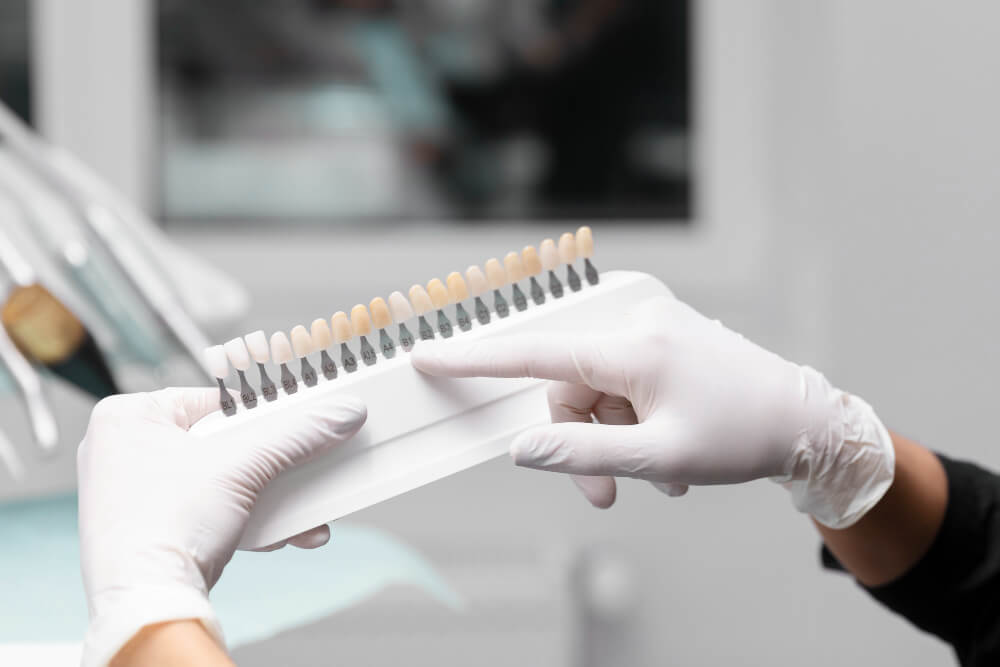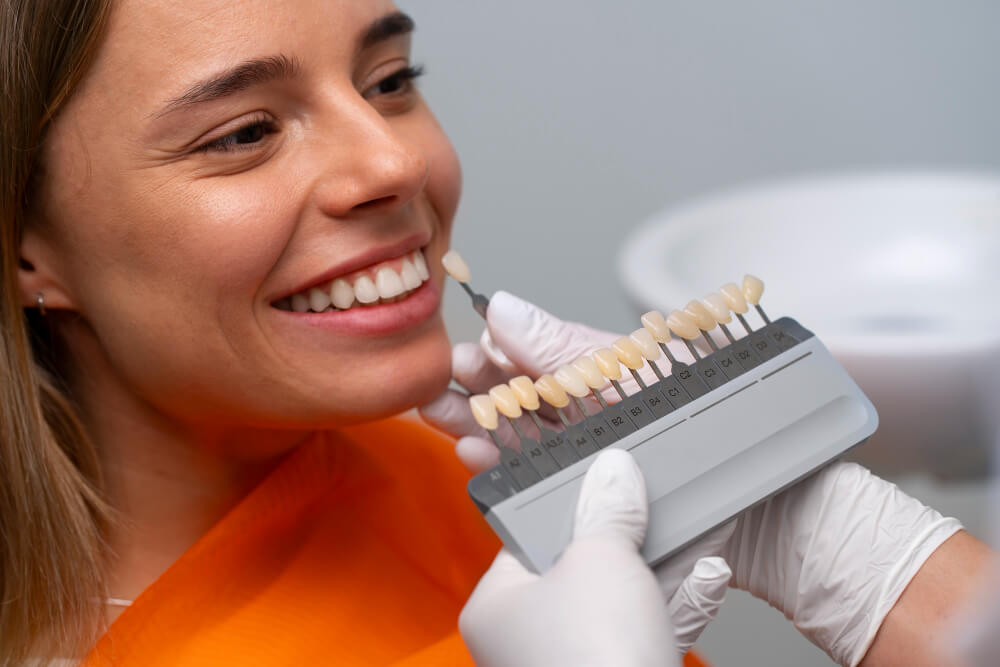Dental Veneers

Change your smile without anyone noticing with Drs. Jaume Janer and Almudena Herraiz!
What are dental veneers?
The smile in our culture is an essential part of beauty, there are factors that can alter dental esthetics, such as discolorations, extensive fractures, carious lesions, misalignment and dental defects.
Dental veneers are an esthetic treatment that allows us to solve these flaws in shape, size and color of the teeth through fine restorations of different types of materials that adhere to the tooth surface always following the philosophy of Minimally Invasive.
This philosophy has an approach in which the greatest amount of tooth structure is preserved when rehabilitating, trying whenever possible to make the treatments reversible.

What types of dental veneers are there?
There are several types of veneers, made of different materials with different characteristics and particularities, with their advantages and disadvantages.
When choosing the material, it is always important to analyze the particular clinical situation, and to see where we are starting from and what we can achieve according to the material.
The types of veneers that exist are as follows:

They can be made of different types of ceramics:
Feldspathic ceramic veneers: These are the ones with the best aesthetic characteristics, due to their great translucency and optical properties, they mimic the color and texture of the tooth, obtaining imperceptible results.
Depending on the clinical case, they can be made with minimum thicknesses and thus avoid the grinding of the teeth.
They are produced in a dental laboratory based on a model of your teeth by a dental ceramist.
Advantages of Feldspathic Ceramic Veneers:
- Aesthetics: Appearance similar to dental enamel, mimics.
- Durability: Very durable with proper care and maintenance.
- Resistance: They are more resistant to staining by food or beverages, and also to wear and tear.
This material is the result of the alchemy between glass and ceramics, making it a highly resistant and flexible material.
If we combine its resistance with its esthetic characteristics, we obtain a versatile material for dental prostheses, bridges, crowns and veneers.
Advantages of Lithium Disilicate:
- Aesthetics: It blends in perfectly with the tooth surface.
- Resistance: Great mechanical properties, allowing adequate aesthetics and function.
- Durability: Very durable over the years.
- Handling: Easy handling by the laboratory, flexible material, with very good esthetic results, high cementation capacity to the dental surface.

They are made with an acrylic resin, with very good esthetic and resistance characteristics.
These resins have various shades, so we can choose the colors that most closely resemble your teeth to give naturalness, or lighter tones in case you prefer whiter teeth.
Unlike porcelain veneers, this type of veneers are made by the dentist directly on your teeth.
They are more economical than ceramic veneers, but a major disadvantage is that they do not offer great resistance to staining and color changes, i.e., the maintenance of this type of veneers is higher than ceramic veneers.
Advantages of composite veneers:
- Great aesthetic properties.
- They are placed in the same visit.
- Lower price.
- Good resistance.
- Conservative treatment.
Requirements for veneers:
- Staining and coloring of dental enamel
- Dental pieces with small fractures, if mild.
- Improve esthetics: whiter and more aligned teeth.
- Improve Anatomy: in irregular, conoid, small, square teeth.
- Slight malposition, slight rotation, diastemas.
When veneers are not recommended
- Patients with malocclusion, it is necessary to perform a previous orthodontic treatment to correct the occlusion and then make the veneers.
- Patients with very poor oral hygiene, it may cause leakage and inflammation of the gums.
- Gingival and periodontal diseases.
- Large crowding: We recommend doing orthodontics first and then veneers.
- Very intense colorations: As staining by tetracyclines, sometimes it is necessary to make crowns, we evaluate each case in particular.
- Fractured teeth (depending on severity), badly destroyed or with little enamel.
Advantages of Dental Veneers
- Correct multiple defects, colorations, small fractures, wear, irregularities.
- Aesthetics: teeth with adequate shape and size, white teeth and brightness.
- Natural result.
- Minimally Invasive Treatment.
- Biocompatible.
Ceramic Veneers
Composite Veneers
01
First Session: Impression taking, planning + smile design according to the patient's expectations, wax-up of the model.
01
First Session: Impression taking, planning + smile design according to the patient's expectations, wax-up of the model.
02
Second Session: Evaluate the design with the patient, Mock-up, tooth grinding, definitive impressions and placement of provisionals.
02
Second Session: Carving, if necessary, and then the veneers are made with previously prepared silicone key, final finishing.
03
Third Session: Placement of veneers by adhesive protocol.
Frequently Asked Questions
The main differences are:
They are different materials.
The price, being the composite ones more economical.
Maintenance, composite veneers require higher and more frequent maintenance.
Durability: Porcelain veneers tend to last longer due to the strength of the material.
No, it is not necessary. It depends on the clinical case.
Due to the high polish of porcelain, they are not usually stained.
They can be stained due to food colorations, depending on the patient’s care. Maintenance can always be done to restore their brightness with polishing.
With proper maintenance they can last for many years.
Special care should be taken with hard and sticky foods, such as ice, chewing gum, nougat, dried fruit and nuts, raw vegetables, which may cause the veneer to peel off or break.
It is essential not to open or manipulate objects with the teeth.
Our main objective is to make the veneers look as natural as possible, improving the patient’s esthetics, but also to ensure that the treatment blends naturally into the smile.
